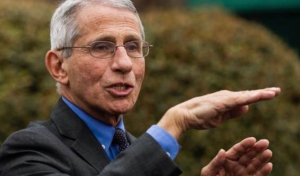The videos open with a birds eye view of sandy beaches or lush paddy fields with lolling people suddenly scampering for cover, hiding their faces in their T-shirts and even mundus (south Indian equivalent of a dhoti).
The videos that have since gone viral were released by Kerala police showing people, flouting the government-imposed lockdown, scattering on seeing the drone. The surveillance was part of the security forces’ effort to identify and reprimand those not following the prohibitory orders.
The whole country was put under a lockdown on March 24 as a measure to check the COVID-19 causing coronavirus that has spread via human-to-human contact to all countries leaving more than 10 million infected and more than 5 lakh dead, with 5.28 lakh of them infected in India only. Kerala reported India’s first COVID-19 case when a woman student from Wuhan returned to her home in January.
The lockdown protocol bars people from gathering in one place and loitering without reason. Kerala is among several states that has introduced surveillance drones to keep check on those flouting regulations. The videos, accompanied by famous Malayalam movie tracks and dialogues, show people jumping over walls and hiding behind trees on spotting the drones.
On April 4, 41 morning walkers in the state’s commercial capital Kochi were police in the night vision cameras of a drone, taken to a police station and warned.
G Poonguzhali, Deputy Commissioner of Kochi City Police, told news agency PTI that the drones would visit markets, walkways and other areas in the city where there are more chances for the people assembling.
“It is reducing the labour of police. It is definitely aiding police in effectively implementing lockdown,” he added.
Not just surveillance, drones also helped with sanitizing areas with cluster outbreaks of Covid-19. South Delhi Municipal Corporation deployed a drone to spray disinfectant over south Delhi’s Nizamuddin area, the headquarters of Islamic sect Tablighi Jamaat, which has turned out to be the epicenter of the Covid-19 outbreak. The Delhi conference of the Jamaat was inaugurated on March 3 and when Prime Minister Narendra Modi announced the lockdown on March 23 many delegates, including foreigners, were still at the venue.
By April 1, 1000 of India’s 2000 COVID-19 cases were traced back to the Tablighi Jamaat congregation.
“The drone deployment was meant to bring down human contact in the area. We don’t want our dedicated sanitation workers to be infected,” a senior SDMC official told news agency IANS. He said drones also help in covering a large area effectively.
“The drone took 18 rounds of 20 minutes each with a 5-litre solution of the disinfectant. We may deploy more drones in the area,” he said.
Chandigarh municipality has also been using drones in its sanitation drive while Jalandhar, Chennai, Bengaluru authorities are using them to keep an eye on those breaking the curfew. Many southeast Asian nations have also extensively used surveillance drones to ensure social distancing in the times of corona.







